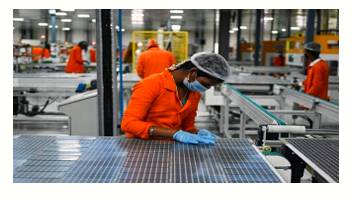
The economic ravages of the pandemic have had an uneven impact and taxation policies continue to be regressive.
There has been great chatter about a V-shaped recovery for quite a while, ever since the first lockdown following the novel coronavirus pandemic. A V-shaped recovery is characterised by quick and effective recovery in measures of economic performance after an acute decline in the economy. There is undeniably some type of recovery, but one can hardly label it V-shaped. The economic ravages of the pandemic have had an uneven impact on different socio-economic groups. The recovery we see today is more K-shaped than V-shaped, with various groups and industries recovering much more rapidly than their counterparts.
Signs from industry
Government taxation policies continue to be regressive, with increased indirect taxes and lower direct taxes placing greater tax incidence on the destitute. The effects of this K-shaped recovery can be observed through the growth and consumption in specific industries.
Two-wheelers represent the economic situation of the lower and middle-class groups and India’s small businesses. A report by analytical company CRISIL indicates that in the year 2021, two-wheeler sales are set to decline by 3%-6% year-over-year. This is on top of a lower base in the year 2020 already affected by the pandemic. The actual decline of two-wheeler sales from pre-pandemic times on account of the base effect must be much more significant. The sales of two-wheelers are the second-lowest it has been in seven years. It is imperative to note that entry-level models are the ones most affected under the category of two-wheelers. The festival season was said to rectify this phenomenon, but it had been unable to. On the other hand, premium cars and premium motorcycles have been resistant to the pandemic slowdown.
Impact of taxation
Moreover, the usurious taxation policy of the Government, which insists on maintaining indirect taxes on fuel and consumer products while lowering corporate taxes, paints a picture explaining these figures. The Government had recently raised taxes on textile products from 5% to 12%. While inflation soars, the incomes of the middle and lower-middle-class have at best remained constant. There is tremendous pressure on the financial stability of these households, which seemingly face a sustained loss in disposable income. Besides, the figures representing those who are employed only partially explain this phenomenon.
On jobs, NREGA
Over five million or 50 lakh people lost their jobs in October, according to a Centre for Monitoring Indian Economy (CMIE) report. Many of those who lost their jobs during this period are likely economically insecure and abstain from non-essential purchases. This, paired with the astronomically high food and fuel prices, delivers a deadly blow pushing families to poverty.
Additionally, it is prudent to look at Mahatma Gandhi National Rural Employment Guarantee Act (MGNREGA) figures as it acts as a proxy for the informal sector, which employs a large portion of Indians. In the year 2021-2022, the Government of India had cut its budget allocation towards MGNREGA by 34%. There is a greater demand now for MGNREGA jobs than in the pre-COVID-19 era. The lower Budget allocation accounts for the inability to compensate workers in time and fairly. A portion of the Budget this year is spent on paying the liabilities for the previous financial year. Those looking for MGNREGA work cannot afford to be unpaid for such long durations. This again ties back to placing upward pressure on unemployment figures.
Stimulus and growth
Therefore, there seems to be no surprise that the consumption of two-wheelers and other such products has taken a significant hit. The U.S. and European economies have stimulated the economy bottom-up through unemployment cheques and social welfare schemes. The economist, John Maynard Keynes, popularised the concept of the money multiplier and the relationship between government stimulus and economic growth. It fundamentally makes great sense to prioritise those who are more likely to spend (the middle and lower-middle-class) rather than those who have a greater propensity to save. The velocity of money which sustained a significant shock from pandemic lockdowns needs to be kickstarted. Furthermore, the inflation of asset prices over the recovery period helps determine the nature of this recovery.
The recovery in the stock market and other such financial assets over the past year has been phenomenal. However, it is essential to understand that this does not necessarily reflect the economy’s condition as observed previously. Less than 5% of India invest in equities, which means that less than 5% of India directly benefited from said recovery. The lower middle class, which does not invest in such assets for many reasons, has no guard against inflation. Their only hedge against inflation is their income which makes for a poor one.
Think welfare schemes
Therefore, as discussed before, their financial situation is worsened due to the rising prices of essential goods. Moreover, the disproportional benefit of the asset price inflation favouring the upper-middle-class further displays the inherent K-shape of the recovery. It is crucial that the Government addresses this phenomenon and works towards aiding the middle and lower-middle class. Social welfare schemes must be given greater importance to assist households to get through this period. A seemingly viable solution is for the Government to increase progressive (direct) taxes and reduce regressive (indirect) taxes to ease the financial pressure on lower-income households.



